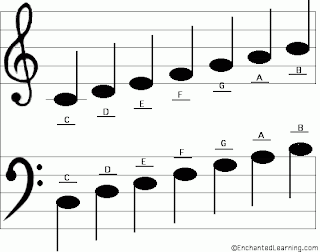Cello test
- I finally got my cello back from the luthiers so we tested and recorded my cello during this lesson. This was the cello I purchased without my teacher seeing it first. I know, I'm not supposed to do that, but I just liked this cello immediately. Love at first sound/bowing/touch! :).
- Fortunately my teacher liked it better than the other cello, this cello has more volume and isn't as "muddy" as the other cello
- The audios for Jonathan Li cello with different strings and bows are posted below. The first half of each recording uses a cheap carbon fiber bow and the second half of the recording uses a pernambuco Paesold bow
Strings
- My other cello was really dark and I wasn't used to how "bright" this one was, so I darkened the tone by switching the strings to Jargar fortes for A & D, Permenant G and Obligato C. Although my teacher said my other cello was pretty dark and "muddy" and he didn't think this cello was bright at all, and it was probably because I was so used to how the other one sounded
- I switched it back to the strings I had before I went to my lesson: Evah A, and Permanent D, G & C and recorded this as well. This is what I currently have on my cello
- The original strings were Evah A&D and Belcanto G&C, but the Evah D was fairly muted and the Belcantos were a bit on the fuzzy side, i.e. not very focused. Although I think it would probably get more focused as I played the cello more
The items below weren't covered during my lesson, just stuff I've been working on independently.
Ear Training
- I had a conversation with my husband regarding cellos tones and the preferences of beginners, and I came to the conclusion that I agree with my husband, the darker (sometimes muddier) tones do tend to hide bad sounds easier than bright focused cellos which is probably why I liked my first cello!
- I've been doing some ear training and I've noticed that it's definitely a lot easier to recognize notes on "bright" cellos than "dark" cellos
- The main idea with this program with regards to recognizing notes and being able to tell if a note is in tune, is assigning characteristics, descriptions, emotions, etc. to each note
- Example: F# sounds "twangy" and a bit hard
- Also, to me D on the A string sounds "silvery." What I would imagine silver (metal) would sound like if it had a sound because it sounds slippery and shinny to me...I'm still in the process of assigning characteristics so I'm not very good at describing them yet
- And E sounds mellow to me, and if that note was a type of metal, I would imagine that it was bronze because its not particularly shiny, its a bit soft and its a little laid back!
- It's kind of weird that I'm assigning types of metals to the tones because most people generally assign emotions and other descriptions, and I don't have a lot of knowledge on metals either! I guess when I think of "properties" I think of metals
- Anyway, its also good if I can associate feelings or emotions, but I haven't been able to do that yet. Although I've read that will become easier to do once I start doing minor scales
- Back to the other point, I can't seem to hear these "characteristics" as easily on my other cello because the notes aren't that vibrant on that cello and the cello is quite a bit darker and richer (more overtones)
- Hmmm...does darker sounding cellos always have more overtones? Is that why its easier to hide bad tones?
Re-learning & muscle memory
- I was really frustrated with switching to my new cello and having to re-learn the finger spacing and bowing angles. I think the bridge is a bit higher on this cello and narrower or something, because my bow angle for this cello is definitely a lot sharper and I still haven't been able to get used to it yet
- I tried playing all of the old repertoire and they sounded way off so I have to re-work all the correct bow angles to those old pieces as well
I don't have a lesson this Monday since its Halloween and my teacher is busy, but this will give me another week to work on my bow angles and finger spacing.
Now that I've finally settled on my cellos, I can finally focus on practicing and not wasting time on finding a cello! ...although I'm still looking for a bow...


















